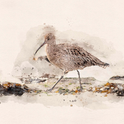simon schama's book about the Netherlands in the 17th century, The Embarrassment of Riches, was published in 1987 and hailed as a masterpiece of scholarly as well as popular history. Then in 1996 a Johannes Vermeer exhibition in The Hague, with an unprecedented 23 paintings on display, attracted enormous excitement. These two events helped to make the golden age of the Netherlands a source of renewed interest, especially in the English-speaking world.
The speculation in rare bulbs was chronicled in Anna Pavord's The Tulip and formed the background to Deborah Moggach's bestselling novel Tulip Fever. This brief but extraordinary episode lasted less than two years, between 1636-7. Tulip bulbs-perceived as exotic, alluring and even dangerous, says Schama-were imported from Turkey, to be bought and sold for prices that could exceed that of a house and all its contents. The mania reached dizzying heights, only to crash in 1637 like dot.com shares.
At around the same time, in 1632, Johannes Vermeer was born in Delft. He died 43 years later, leaving a debt-laden wife, 11 surviving children and only 30 paintings. Today his images (Girl With a Pearl Earring; A Lady Writing a Letter with her Maid; Milkmaid) are universal. Last month, Anthony Bailey's A View of Delft-an attempt to portray the artist's life, although practically nothing certain is known about it-was published to high praise. The Netherlands in the 17th century is still hot.
One of the best of the recent literary offerings is Astraea, a novel by Jane Stevenson. It is set in the Netherlands in the 1630s and 1640s, but neither Vermeer nor the tulip is mentioned. This book is so intelligent and original that it establishes the author as a potential successor to Penelope Fitzgerald. Yet although Stevenson's two previous books, Several Deceptions and London Bridges, were well received, Astraea slipped out to meagre reviews and quickly disappeared from bookshop displays. It deserves better.
The novel describes a secret love between James I's daughter Elizabeth of Bohemia, living in exile in The Hague, and Pelagius, heir to the Yoruba kingdom of Oyo, another exile. The two are splendidly depicted on the jacket; she pale and anxious in white lace and black velvet; he pitch-black and proud in a white doublet trimmed with garlands of leaves. Both wear pearls in their ears. For 20 years Pelagius has been a freed slave apprenticed to a miserly botanist. When his master dies, Pelagius is forced to support himself by practising his shamanic powers. Soon his herbal potions and African incantations are in demand to procure or prevent miscarriage, ease a hard birth, cure sickness or conjure visions-even those of royal princesses.
The story she goes on to relate is so strange yet so believable that I checked to see whether Elizabeth of Bohemia did in fact contract such a relationship and secret marriage. She did not; but in the book she and Pelagius have a son, Balthazar Stuart, whom they see as embodying the hope for a new age. Astraea is the first in a trilogy of historical novels that will culminate in the present day. It is an ambitious project, but well within the scope of this exceptional writer.
Stevenson is the antithesis of those modish young authors whose books become brand-names. Far from being a glamorous thirtysomething Londoner, Stevenson is an academic living in Aberdeen and Warwickshire. Today's publishing world has little time for such unshowy figures. Their books have to sell through private recommendation. Track down Astraea, read it, and pass on the word: here is a writer worthy of the highest traditions of English fiction.











